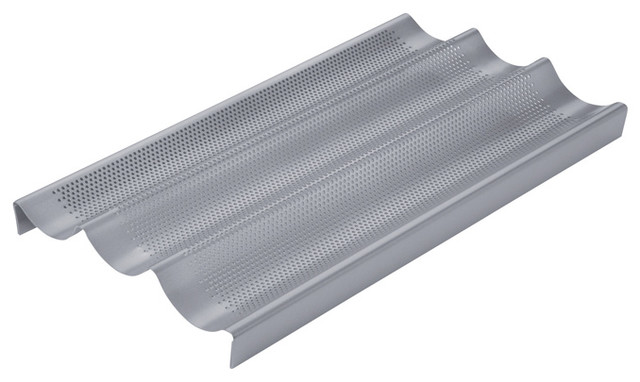 |
| Borrowed from Google |
Bread makers are popular nowadays and there is no doubt they make the whole process dead easy. Load it up, set the timer, go to bed and wake up to the most gorgeous aroma of freshly baked bread. Wonderful!
I have a bread maker but haven't used it for the longest time because I've discovered that I rather enjoy the process of making bread by hand (with one exception, see below). Also, even inexpert, fumbling me realised very quickly that you cannot hurry a good loaf - well, you can but it's not usually necessary. While things like kneading or the actual baking can and should be timed, the rest of it is a case of working with the dough. Sometimes it rises quickly and sometimes it rises slowly depending on all sorts of things like the yeast, the temperature or the air pressure/humidity . You simply have to wait for it. I haven't had many failures but those I have were caused by me telling the dough it had had its hour to rise so it was time to move on to the next bit when the dough disagreed!
Bread makers do that. They determine the timing (obviously); they dictate to the dough. Mostly it is OK and, for sure, a bread maker loaf is much more tasty than most supermarket bought loaves and a whole lot better value than one bought in a baker's shop, but the old fashioned way is best for me (sort of).
I'm lucky - I have the time or can make the time. If you don't, breadmakers are certainly a good way to go and they are wonderful inventions!
There are so many different tins, etc, to bake your bread. For me, the essentials are
a baking sheet for free form loaves
several 1 lb loaf tins (because that's the size I bake) and liners to fit
a few loaf tins in other sizes
I also have
a loaf tin with a lid to make square loaves which are great for sarnies
and - my current pride and joy - my baguette tin/sheet


I have some pyrex bowls of different sizes that I use for all sorts of kitchen stuff, not just for baking
I have a dough cutter, just because I do. It's not essential but it does make cutting the dough easy.
 |
Finally - and big confession time - I have a Thermomix (regular readers may just possibly have gathered this from other entries!). I didn't get her for making bread, I got her because she is the most brilliant bit of all-round kitchen equipment ever. If you watch things like Great British Menu, Masterchef, etc, you will have seen it being used without necessarily realising.
One thing (among many) that I use Thermione for is kneading mydough. You see, I HATE the feel of the wet ingredients before they have come together to create that pliable, soft thing we call dough so Thermione does it for me using the knead function. Cheat? - yes, probably, but I do finish it off my hand and I do check the feel of the dough.
Doing it all by hand is fine. You don't need what the great Jack Monroe calls a fancy-pants bit of equipment. But if you are lucky enough to own one (like a Kitchen Aid, for instance), there is no doubt it makes the job a whole lot easier.
I also use bog-standard kitchen stuff like cling film, cooling racks, etc
The essentials are:
scales and measuring spoons
a bowl
a baking tin or baking sheet
a cooling rack
The rest is helpful but extra!
Part 1: introduction
Part 2: ingredients
Part 4: my recipe
Being contrary, I enjoy getting my hands in dough and suchlike. I use a very old food processor to do chopping, grating, slicing and some of the mixing. Then I often use a halogen oven to do the baking. I'd never do enough to qualify such a large spend as purchase a 'Thermione'.
ReplyDeleteThermione was definitely an extravagance and is a memorial to my Auntie May, whose small legacy paid for her.
ReplyDeleteJ x